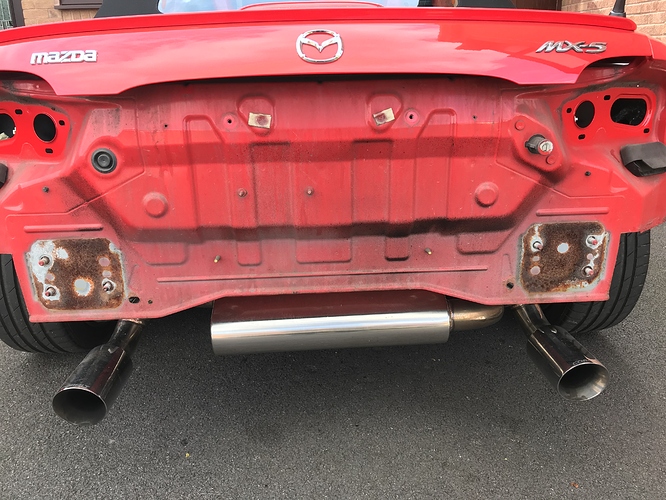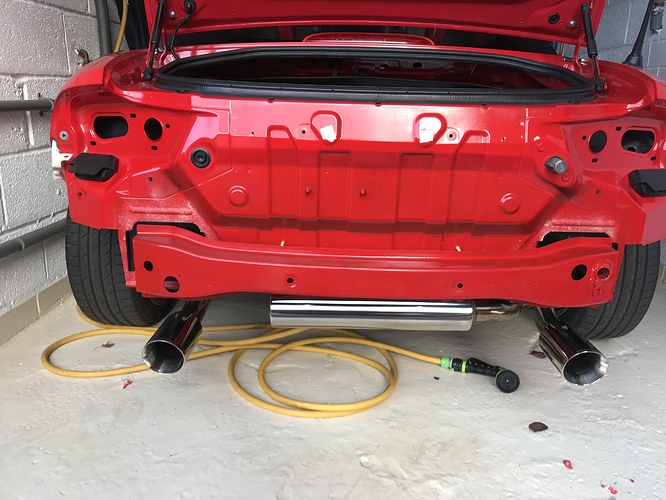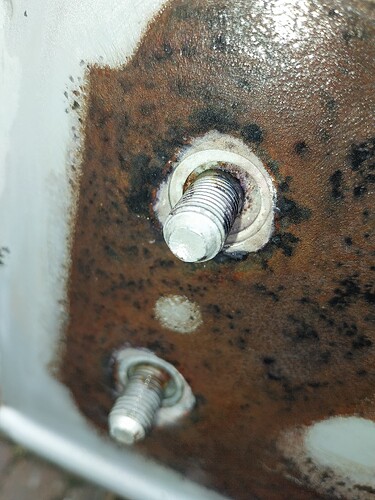For any Mk3 owners that may not be aware the linked video shows a high potential rust area where the rear bumper support is bolted to the body. Normal undersealing will not address this issue of closely fitting unprotected steel parts bolted together. Overall the video shows how to remove the bumper and remedy the issue but I personally would treat the mounting surfaces with either an underseal product or a water repellent eg silicone grease after painting and before bolting the support back on.
I’ve done mine as in the video but I didn’t remove the crash bar, revisit maybe there then.
I would add whilst removing the bumper have a look up behind that rear panel, the boot floor each between the rear chassis legs and wing catch the rust. Also the exhaust hanger brackets that are welded to the chassis rails will rust. I noticed on mine the thick underseal coating had started to crack around those brackets and moisture was creeping in, hence rust and at a later date that can turn into crusty stuff and the brackets could break off.
Did mine recently. You can clearly see the rust where the crash bar bolts to the body. I cleaned both parts of rust, treated, painted both parts, then applied waxoyl before refitting
Great video, very clearly explained - thank you. I started on this job yesterday on my 56 plate car. However, having got the crash-bar off and looked at the corrosion, I initially wondered if this is a case of “if it ain’t broke, don’t fix it” and that I may have done more harm than good by breaking the factory paint seal when I removed the crash bar. Yes, both surfaces are rusted, but there is no flaking or lamination, its just a pretty firm layer of superficial surface rust - and that’s on surfaces that have been unpainted since manufacture 17+ years ago. But see comments below, looks like it can become a issue.
Seems to me that:
- Rust is oxidisation of steel - it needs air to happen
- The two surfaces are tightly clamped together in the factory, with a very small volume of air trapped in micro-voids between the two surfaces.
- Fitting the crash-bar to the body before painting is probably primarily about manufacturing efficiency, but it also means that the joint is sealed off in the factory from new - no fresh air can get into the joint unless the paint finish deteriorates. (There was no sign of the paint seal having broken before I unbolted the crash-bar.)
- So once the rusting process has used up all the oxygen in the pockets of air trapped in the joint, it stops. It can go no further unless fresh air gets into the joint bringing more oxygen.
- I’m guessing that’s why on my 17 year old car the corrosion is no more than surface deep.
If I could wind back time, I’d leave the crash bar in place and not break the factory paint finish that seals the joint. As it is, I’ve wire brushed and applied rust stabiliser (FE123) onto each surface, but I’m not convinced I want to paint the mating surfaces. I’m inclined to just apply waxoyl to each surface before bolting them back together. I figure that as well as inhibiting corrosion, the waxoyl will fill the micro-voids between the two surfaces, instead of air. After I’ve bolted the crash-bar back into place I’ll clean off any excess waxoyl that gets squeezed out of the joints, and then paint the whole area with hammerite AFTER I’ve reinstalled the crash-bar, in the hope of sealing off the joint - as it was when it left the factory.
There is another way I might try instead of waxoyl, I wonder if this sounds crazy?
- two or three coats of hammerite on the car and on the mating surfaces of the crash bar
- bolt the crash-bar back on to the car while the paint is still wet
- immediately apply two or three more coats to the car and the crash-bar
This way I will get paint displacing any air pockets between the mating surfaces, the paint seal bridging the joint, and the paint in the joint will cure as-one with the paint covering the perimeter of the joint.
In fact is that panel on the car even structurally important at all? The bolts for the crash-bar go right through the panel into thicker end plates on the chassis box sessions.
I’ve seen pics (can’t find them now) of that rear panel actually crumbling away with rot, around one of the crash bar mount points too. Needed new metal welding in.
Mines been fully undersealed and cavity wax everywhere but I’m guessing not up under behind the bumper, definitely not between the crash bar mounts and rear panel.
I think it’s a lottery whether moisture can get between those mating surfaces of crash bar and back panel. I’ll be tinkering again soon, rear bumper removal is on my to do list and make sure I haven’t got rust starting there between crash bar and panel, off it’ll come.
That’s what I was after, thanks. I suppose its not good to have that panel rot away even if its hidden and not structural. For one thing I suppose if it rots around the mount points it could open a path for moisture and corrosion inside the chassis boxes behind ?
Just had another good look. On close inspection there is minor corrosion visible on the backplate/flange of the chasis box section - just around the bolts, visible through the over-sized holes in the panel. That’s making me lean back to my first idea, ie waxoyl sandwiched between car and crash-bar.
It doesn’t look serious, but couldn’t be found or dealt with without removing the crash-bar!



